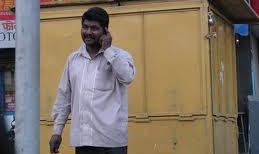  Around 40% of people in cities use smartphones and rely on mobile information to solve day to day issues while mobile network coverage ranks fourth on a list of what city residents are most satisfied with, according to a news Ericsson report.
In a new report by its ConsumerLab research team, Ericsson looks at the aspects of satisfaction in city life based on environment and social networking.
Among the findings are that people in megacities give mobile network coverage the fourth highest satisfaction rating alongside water distribution and the availability of social spaces, ranging from cafés to entertainment facilities. On the other hand, poor air quality and lack of parking can impact dissatisfaction.
“Urbanization is a global mega trend. City populations grow by 7500 people per hour, and people are clearly feeling some stress from overcrowding. But we also see how people in cities use ICT as a means to alleviate such feelings and to better experience city life,” said Michael Björn, Head of Research at Ericsson ConsumerLab.
Highlights for living in a city are the accessibility to restaurants, cafés, entertainment facilities, and markets. People in cities are more socially active, and their social circles spread wider than people not living in cities.
Low lights have to do with crowds and traffic. The survey found that the average commute time in the 13 cities was two hours, twenty minutes per day. Björn said: “People are more relaxed when they know how long their commute will take, as this enables them to use their time more efficiently. Smartphones are becoming an invaluable tool on the daily commute.”
“Knowing the ways in which people choose to commute helps us to determine what services they find the most beneficial. For example, people who commute by bike would benefit from knowing where they can use cycle lanes. Those who use public transport would benefit from real time updated timetables and travel planners. Or, for those who drive, a GPS travel planner with access to real time traffic data would save considerable time and stress,” he concluded. |